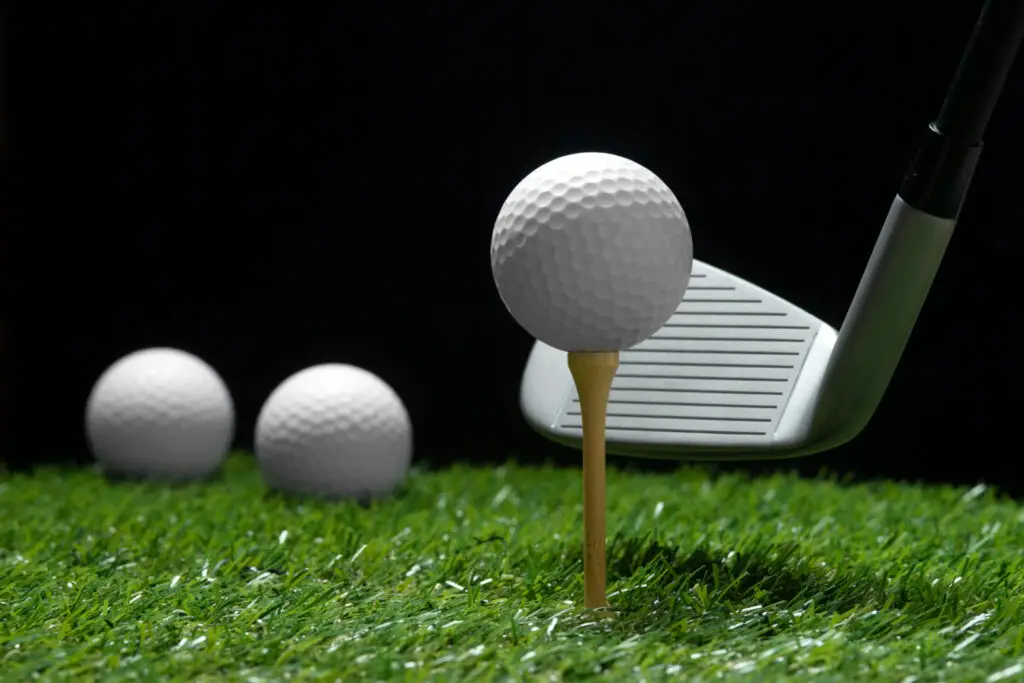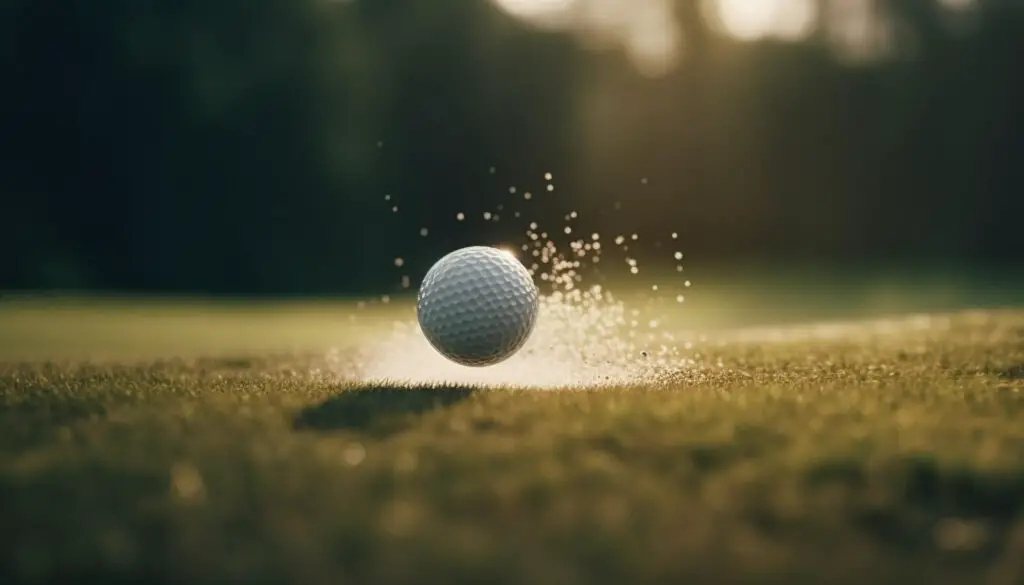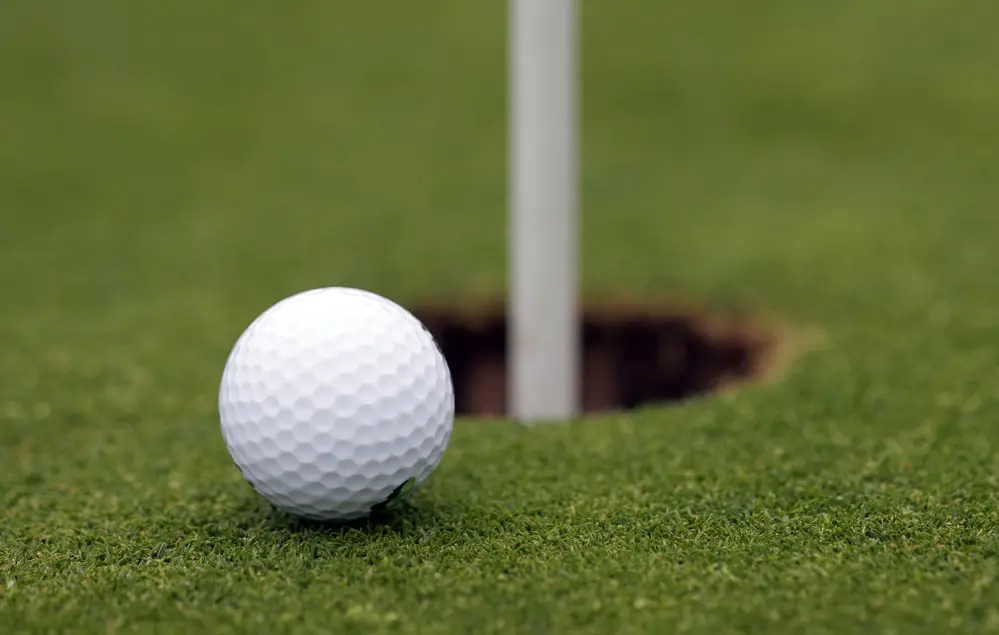Last Updated on October 24, 2023
Golf balls have been around since the 15th century, and while they may look pretty similar to each other, there’s actually a lot of science behind what goes into making them. Have you ever wondered what golf balls are made of? Well, wonder no more. From the core materials that give them their bounce to the covers that help with control and spin – we’ll explore all things related to “golf balls made of” in this blog post. We’ll also cover compression ratings and how construction plays an important role in determining performance on the course. So get ready for some fascinating facts about your favourite little white spheres.
Table of Contents:
The Core
Golf balls are made up of several components, but the core is arguably the most important. The core affects a ball’s performance in terms of distance, spin and trajectory. It also determines how soft or hard the ball feels when hit with a club.
There are two main types of cores used in golf balls: solid and liquid-filled. Solid cores are usually made from rubber compounds that have been mixed with other materials to create an ideal balance between compression and resilience. This type of core provides more control over shots due to its low spin rate off the tee and less backspin on approach shots into greens.
Liquid-filled cores, on the other hand, use a combination of water or oil as well as rubber compounds to produce a softer feel at impact while still providing a good distance off the tee and increased spin around greens for improved accuracy. These types of cores tend to be more expensive than their solid counterparts due to their complex construction process but offer better overall performance for players who need extra help controlling their shots around the green.
The Cover
Golf ball covers are an important part of the game, as they provide a layer of protection to the core and can affect performance. The most common materials used for golf ball covers are Surlyn, Urethane, and Cast Urethane.

Surlyn is a thermoplastic resin that has been around since 1959. It is known for its durability and provides excellent spin control off the tee. It also helps reduce drag on shots hit with irons or wood due to its low compression rating. However, it does not offer much feel when putting or chipping around the green because it lacks softness compared to other cover materials.
Urethane is another popular material used in golf ball covers today. It offers more feel than Surlyn but still provides good spin control off the tee and reduced drag during flight from iron shots due to its higher compression rating than Surlyn. Urethane also provides better greenside control due to its softer nature compared to Surlyn, which allows players to have more confidence in their short game shots around the green as well as putts inside 10 feet, where feel matters most.
Cast urethane, a newer material in the golf ball cover realm, has seen an increase in popularity due to technological advances. Manufacturers such as Titleist, Callaway and TaylorMade have been able to create thinner cast urethane covers while still providing durability and performance benefits like improved spin rates off the tee with enhanced greenside control without sacrificing distance or accuracy.
Compression
Compression is a term used to describe the hardness of a golf ball. It measures how much energy is transferred from the clubface to the ball when it’s hit and affects its distance and spin rate. The higher the compression rating, the harder the golf ball will be and vice versa.
High-compression golf balls are designed for players with faster swing speeds who need more control over their shots due to increased accuracy and lower spin rates off tee shots. Low-compression models offer less control but generate more distance due to greater launch angles off driver swings while also providing a softer feel around greenside chips and putts.

The construction process can also influence compression ratings; some producers utilise injection moulding techniques that enable them to precisely modify each layer in order to attain desired outcomes based on player needs, such as longevity or softness, without compromising performance characteristics like spin rate or trajectory height at the point of impact. Different brands may even combine different types of covers (urethane/ionomer) into one model so as to obtain desirable effects from both materials while still maintaining consistent overall performance throughout rounds played under varying conditions, for example, windy days and wet grasses.
FAQs in Relation to What Are Golf Balls Made of
What is a golf ball filled with?
A golf ball is filled with a solid core made of rubber or synthetic material and surrounded by a thin cover. The core affects the ball’s compression, spin rate, and distance, while the cover affects its durability and flight characteristics. Modern golf balls are typically composed of two to five layers which can include an inner core layer, mantle layer(s), an outer cover layer, dimple patterning, and paint coating. Each component plays an important role in determining how the ball will perform when hit off the tee or fairway.
What are premium golf balls made of?
Premium golf balls are typically made from a combination of materials, including rubber, plastic and various types of synthetic fibres. The core is usually composed of two or more layers of solid rubber or liquid-filled rubber with an outer layer that can be either one-piece or multi-layered. The cover material may include urethane, ionomer resin, balata (natural rubber) and/or other proprietary materials. These components work together to provide optimal spin rates, control and distance off the tee. Premium golf balls also feature dimples on their surface, which help reduce drag during flight for increased accuracy and distance.
Do golf balls biodegrade?
Yes, golf balls do biodegrade. The process is slow and can take anywhere from several months to a few years, depending on the environment they are in. Golf ball cores are typically made of rubber or plastic, which will eventually break down into smaller pieces over time due to exposure to sunlight, oxygen, and moisture. Additionally, some manufacturers have started using biodegradable materials such as soy-based plastics in their golf balls for an even more eco-friendly option. Ultimately, it’s important that golfers dispose of their used golf balls responsibly, so they don’t end up polluting the environment.
Conclusion
Golf balls are made of many different materials, each with its own unique characteristics. From the core to the cover and compression to construction, golf ball manufacturers have developed a wide range of products that can help you find just the right one for your game. Whether you’re looking for distance or spin control, there’s sure to be a golf ball made of material that fits your needs. So get out on the course and start enjoying all that golf has to offer.



